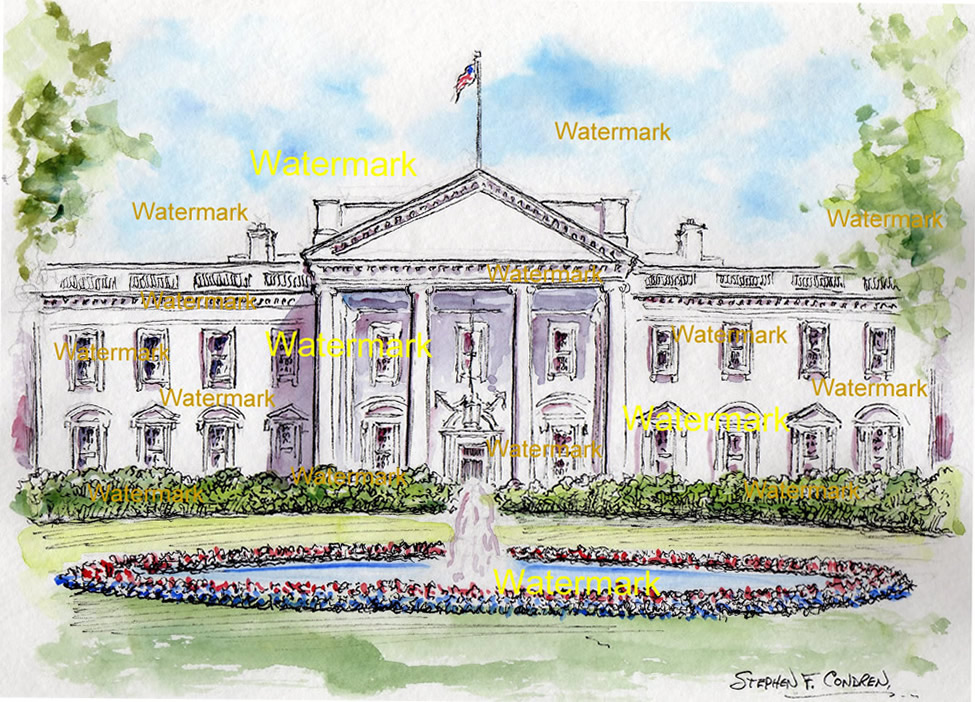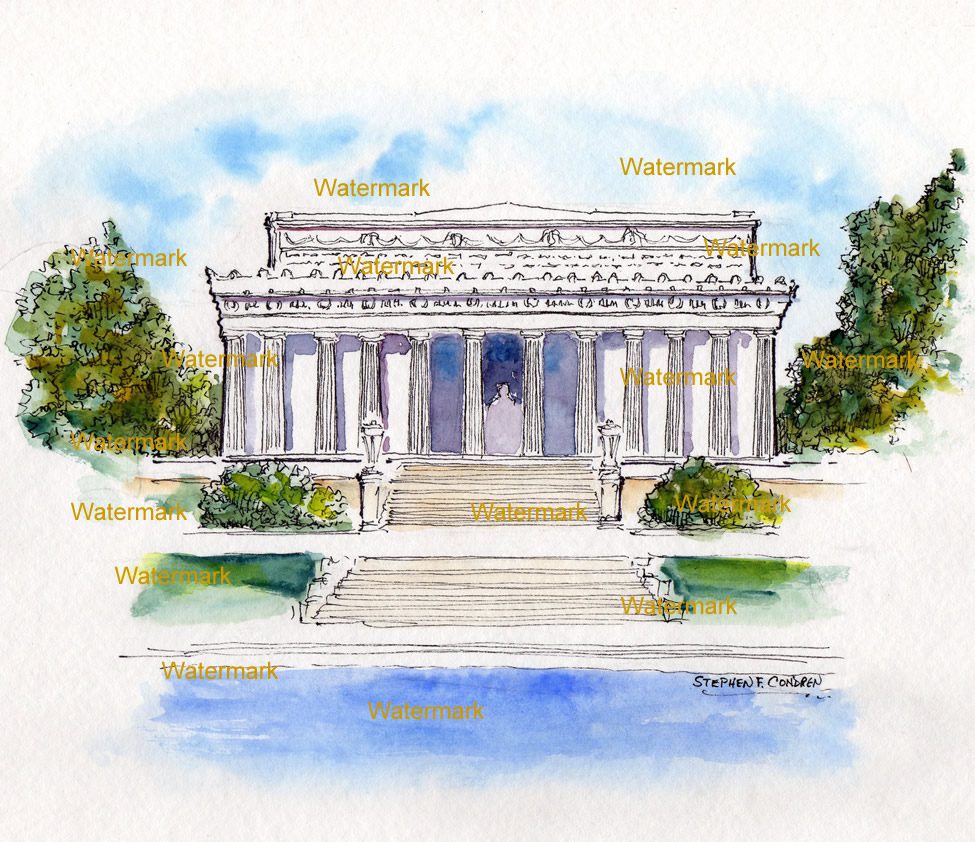
This article is about the White House watercolor #673, which is for sale at discount with prints by artist Stephen F. Condren, BFA-SAIC, of Condren Galleries, a Fine Arts Gallery, offering JPEG & PDF scans. This article is about the White House and the watercolor painting that I have done of it for use as prints. Prints & Scans Of This Watercolor #010A ~ Order Here.
The White House In Watercolor #673. To do a good watercolor of any structure it is recommended to do the following:
- Either get a good photograph of the structure, or if on site, position yourself so that you have a full view of the subject.
- Determine the perspective vanishing points.
- Have all of your artist materials close at had so as to avoid interruption on the work do to breaks.
The White House, located at 1600 Pennsylvania Avenue is without doubt the most famous house in the world. This Georgian style house is the focal point of many political issues, however, my interest in the house is from the standpoint of Art. I will address only the central block of the house in this article.
The two-story mansion is the residence of the President of the United States and his or her family. This splendid home is difficult to address because it is so famous and is the focus of so many images. So please try to think of the house as a work of art rather than the center of political attention. Looking at the White House immediately we see that it is simple in design and not at all as lavish like many other mansions in the country are, e.g. The Breakers in New Port, Biltmore House in Asheville, and Hearst Castle in San Simeon.
Architecture of the White House
The central block of the building is rectangular in shape and is wider than it is long, the main entry faces north with a grand portico supported by two-story tall white Grecian pillars. The driveway is ample in servicing residential traffic needs. The back side of the house faces the south and is the garden entrance. The difference of the facade is that the center of the house is curved with a balcony around the curve. Many people wrongly think that the Oval Office is located here on the second floor when in fact it is located on the ground floor in the corner of the west wing a good distance from the central block of the house (though connected by internal corridors).
Both sides of the home have extensive gardens and each has a large fountain with sprays at the center. The fountain on the front lawn is usually decorated with ornamental flowers in the patriotic colors of red, white, and blue. When looking at the windows of the house you will note that there is a staggered pattern of a curves that angel above each window. There are four windows across on each side and the second floor windows are aligned with those directly below. The upper floor windows are smaller and are not as embellished with as much details as their counter parts below.
With regard to proportion the garden face is far superior to the main entry. The portico proportions do not match the scale of the house and it is too tall, whereas the proportions on the garden face are splendid needing no adjustments.



